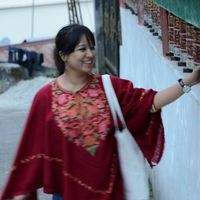Dixita Deka
Tata Institute of Social Sciences, School of Social Science, Graduate Student
Research Interests:
Research Interests:
Research Interests:
Research Interests:
This paper attempts at initiating a conversation on an under-represented event of extrajudicial executions popularly called 'secret killings' in the North East Indian state of Assam. Ever since India's independence in 1947, the North East... more
This paper attempts at initiating a conversation on an under-represented event of extrajudicial executions popularly called 'secret killings' in the North East Indian state of Assam. Ever since India's independence in 1947, the North East region of India has witnessed the beginning of armed struggles towards self-determination and sub-nationalism. Unlike and until the late 1990s, today the region is comparatively 'peaceful' if peace would equate to the official death statistics. However, an ambivalent meaning of peace unfolds in the region's oral narratives coming from the people who have experienced, witnessed, perpetrated, recall or overlooked violence that had left them without closure. In this paper, I intend to reach out to the under-represented voices irrespective of their sex but with a keen reflection upon the difficulties of locating women and representing their testimonies of violence. I have attempted to do this gravitating towards the footnotes, rumours, and field notes. These vignettes and memories contest the homogeneity of women as a category and necessitate making the narrative on secret killings inclusive.
Research Interests:
Research Interests:
Research Interests:
Research Interests:
Drawing on research from her MPhil project on the underground lives, activism and representation of women combatants of United Liberation Front of Asom (ULFA), Dixita Deka highlights the position of former female insurgents, who she... more
Drawing on research from her MPhil project on the underground lives, activism and representation of women combatants of United Liberation Front of Asom (ULFA), Dixita Deka highlights the position of former female insurgents, who she argues, remain underground in different capacities. It is vital to bring out the missing voices on violence through alternative spaces of resistance including interview transcripts, poetry and diary accounts, she concludes.
Research Interests:
Research Interests:
Research Interests:
Research Interests:
The Kashmiri Women Demanding Answers
Research Interests:
The way the region has been governed since colonial times shapes the narratives of underdevelopment of the social sector in the present time.
